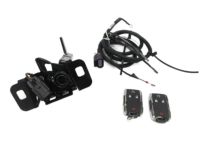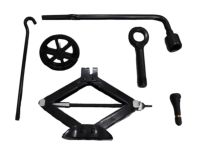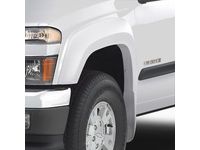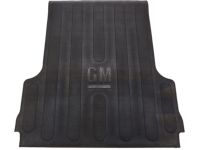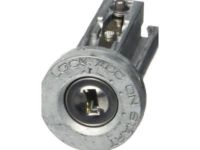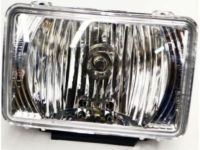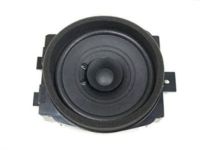Why choose GMPartsGiant
- Optimal Shopping Experience
Want to buy parts for your GMC Canyon? Look no further than GMPartsGiant.com, the best place for GMC Canyon genuine parts. For years, all of our GMC Canyon auto parts and accessories have been expedited directly from dedicated dealers and backed by the manufacturer's warranty, so buying from GMPartsGiant.com is always risk-free.
- Dedicated Customer Service
Our first-class customer service team is committed to providing you with the best assistance possible. Dedicated representatives are standing by to assist you by email, live chat, or phone. Every effort is made to ensure your order for OEM GMC Canyon parts arrives fast no matter your location in the nation, so your vehicle is up and running and back on the road.
- Unbeatable Prices
What makes us the best online source for GMC Canyon parts and GMC Canyon truck parts? Our goal is to offer the lowest prices. You get giant savings shopping with GMPartsGiant.com. With a complete GMC Canyon parts catalog, we cover a full selection of affordable OEM GMC Canyon parts and pickup parts with a huge inventory.
Popular Genuine GMC Canyon Parts
- Engine Parts View More >
- Front Suspension, Steering Parts View More >
- Fuel System, Exhaust, Emission System Parts View More >
- Brakes Parts View More >
- Transmission - Automatic Parts View More >
- Frames, Springs, Shocks, Bumpers Parts View More >
- Cooling System, Grille, Oil System Parts View More >
- Front Axle, Front Suspension, Steering Parts View More >
Shop Genuine GMC Canyon Parts with GMPartsGiant.com
Introduced in 2004, the GMC Canyon is a compact pickup truck designed by General Motors to cater to customers who wanted more capability than a half-ton pickup truck could offer. Available in regular, extended, and crew cab versions, it comes with options for two-wheel or four-wheel drive. With a choice between the Z71 suspension for a smoother driving experience and the Z85 suspension for better off-road performance, the Canyon is a versatile vehicle suited for various terrains. The 2004 model was based on the GMT355 and produced at the Rayong plant in Thailand for international markets and the Shreveport plant for North American customers. In 2007, the vehicle received an update that included new bodywork and engines. The 2009 model introduced Bluetooth hands-free technology and a 5.3L LH8 V8 engine. Later models came with standard aluminum wheels and offered the ZQ8 sports suspension and enhanced Z71 SUV package, boosting its agility. The 2.9L four-cylinder engine generated 185 hp while the 3.7L five-cylinder produced 242 hp, with an additional 5.3-liter V8 engine option offering 300 hp and 320 lb-ft of torque. Electronic stability control was made a standard feature across all models. The GMC Canyon was revamped in 2014, sharing similar features and parts with its cousin models, and came with an increased price tag due to more optional features. The base model comes equipped with a 2.5L Ecotec I4 and a six-speed manual transmission. It's a well-rounded, mid-size pickup that combines power, versatility, and modern technology.
Despite being a relatively new model, the GMC Canyon can still experience some issues due to mileage accumulation or design immaturities. The most common problems, according to owner experiences, relate to the braking system and electrical components. Owners often report a persistently illuminated ABS light, longer stopping times, and difficulties such as tire slipping or loss of traction under slippery conditions. Additionally, the vehicle may exhibit signs of shaking, misfiring, or hesitation during acceleration. If these issues sound familiar, consider checking your ABS sensor or wheel speed sensor and the body control module. The steering system can also present problems, with owners reporting clunking noises, excessive front-end vibration, and difficulties controlling the steering wheel. Often, the steering knuckle, a crucial part of the suspension system, may be at fault. Furthermore, under extreme driving conditions, certain parts like the windshield wiper or wiper blade may wear out quickly, so regular maintenance of these components is recommended.
Original equipment manufacturer parts excel in quality. Made from the finest materials to guarantee their durability, they are the top choice for maintaining your vehicle's peak performance. Furthermore, they are designed to adhere to official GMC factory specifications, ensuring effortless installation and a perfect fit. At GMPartsGiant.com, we offer the most competitive prices for OEM GMC Canyon parts, including Interior Trim, Front Seat Trim, Seat Belts, Front End Sheet Metal, Heater, Transmission - Manual. Our extensive inventory of genuine GMC Canyon parts, such as Body Moldings, Cab Sheet Metal, Pickup Box, Roof Hardware, Body Mounting, Air Conditioning, Audio/Entertainment ensures that you find exactly what you need. For your peace of mind, all our parts, like Rear Body Structure, Moldings & Trim, Cargo Stowage, Transfer Case come with a manufacturer's warranty and are eligible for our hassle-free return policy, coupled with our promise of the fastest delivery service.
GMC Canyon Parts Questions & Answers
- Q: How to diagnosed the Door Lock on GMC Canyon?A: The power door lock system operates the door lock actuators in each door, consisting of switches, actuators, Body Control Module (BCM), and associated wiring. Diagnosis typically involves checking the wiring connections and actuators for minor faults that can be easily repaired. The system is operated by bi-directional solenoids located in the doors, with lock switches having two positions: Lock and Unlock. These switches send a signal to the BCM, which then sends a signal to the door lock solenoids. It is important to check the circuit protection first, as some vehicles use a combination of circuit breakers and fuses. If no voltage is present at the switches, the wiring between the fuse panel and the switches should be checked for shorts and opens. If voltage is present, the switch should be tested for continuity and replaced if there is none. If it has continuity, check the wiring between the switch and the solenoid. If all but one lock solenoids operate, the trim panel should be removed from the affected door to check for voltage at the solenoid while the lock switch is operated. If the inoperative solenoid is not receiving voltage, an open or short in the wire between the lock solenoid and the relay should be checked.
- Q: How do you remove the ignition switch and Ignition Lock Cylinder on GMC Canyon?A: To remove the ignition lock cylinder, start by disconnecting the negative battery cable and removing the steering column covers. Then, remove the Park lock switch and slide off the theft deterrent control module if applicable. Next, place the key in the lock and rotate it clockwise to the Accessory position. Push in the retainer pin and pull out the key and ignition lock cylinder from the housing. To replace the ignition lock/switch housing, remove the multi-function switch/airbag coil and its mounting plate from the column. Remove the shear bolt from the ignition switch housing by drilling a hole in the center and using a screw extractor. If you only need to remove the electrical portion of the ignition switch, disconnect the electrical connector and remove the switch. To install the ignition lock cylinder, align the retainer with the slot in the housing and push it in until it snaps into position. When installing the new shear bolt, tighten it until the shear head breaks off. Finally, reverse the steps for reinstallation.
- Q: What are the instructions for adjusting the headlights and fog lights on GMC Canyon?A: These instructions provide guidance on adjusting the headlights and fog lights on certain models of vehicles. The headlights have a screw for adjusting the up-and-down movement, while the left-and-right movement is not adjustable. To adjust the headlights, a blank wall 25 feet in front of the vehicle and a level floor is needed. The adjusting screw should be turned to position the high-intensity zone two inches below the horizontal line. It is recommended to have the headlights adjusted by a dealer service department. Some models also have optional fog lights that can be aimed like headlights. The fog lights can be adjusted using torx-type adjusting screws. The adjusting screws on the fog lamps can be used to adjust the pattern on the wall so that the top of the fog lamp beam meets the lower line. The specific location of the adjustment bolt or screw may vary depending on the model of the vehicle.
- Q: How do I remove and install a radio and speaker on GMC Canyon?A: To remove the radio, disconnect the negative battery cable and remove the center accessory trim plate from the instrument panel. Then, remove the mounting screws and pull the radio out. Disconnect the connectors and remove the radio. To install the radio, reverse the removal steps. For speaker removal, remove the door trim panel and speaker mounting screws. Pull the speaker out, disconnect the electrical connector, and remove the speaker. To install the speaker, follow the reverse of the removal steps. If your vehicle has a digital radio receiver, it may be located behind the glove box. Remove the glove box and instrument panel right-side end panel. Reach through the openings to remove the screws securing the radio receiver. Disconnect the electrical connectors, one of which requires pushing in a tab to release. To install the digital radio receiver, reverse the removal procedure.



















































